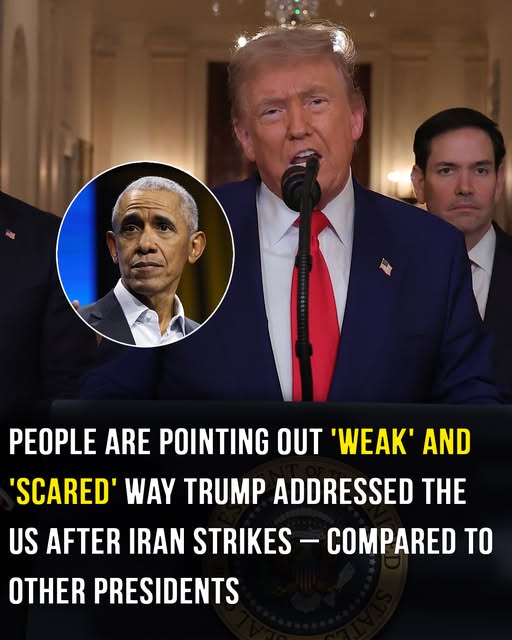Donald Trump’s recent national address following the U.S. airstrikes on Iran has drawn sharp criticism, not only for the controversial military action itself but for the tone and delivery of his speech. Many viewers and political observers have described Trump’s appearance during the broadcast as nervous, uncertain, and far from the bold, confident persona he’s long projected.
The strikes, carried out on June 21, 2025, targeted Iran’s key nuclear facilities—Fordo, Natanz, and Isfahan—in what the President labeled a “spectacular military success.” According to Trump, the operation involved over 125 aircraft and was aimed at destroying Iran’s nuclear enrichment capabilities, which he described as “a threat to global peace and American security.”
But while Trump celebrated the strikes as a decisive victory, Iran’s reaction was swift. On June 23, the Iranian military launched missile attacks on U.S. bases in Iraq and Qatar, signaling clear retaliation. Trump quickly announced that a temporary ceasefire between Iran and Israel had been secured, but the situation remains highly volatile and unstable.
What caught many off guard wasn’t just the international fallout—it was Trump himself. As he stood before the nation in the Cross Hall of the White House, flanked by advisors and military officials, he appeared visibly uneasy. His voice lacked its usual bravado, his tone was subdued, and his hands occasionally trembled as he read from the teleprompter. The internet took notice immediately.
Social media platforms exploded with commentary. On X (formerly Twitter), one user wrote, “I’ve never seen Trump this rattled. He looked like a man realizing he may have just started something he can’t control.” Another posted, “The man who branded himself as fearless looked terrified. This is not leadership—it’s panic under pressure.”
Critics across the political spectrum began comparing Trump’s performance to wartime addresses from previous presidents. Barack Obama, George W. Bush, even Joe Biden—all were praised for delivering messages of resolve and clarity during crises. In contrast, Trump’s address was called short, awkward, and lacking in the reassurance Americans expect in times of conflict.
Some speculated that the magnitude of the decision, and the uncertainty of Iran’s next move, had finally caught up with him. “He started a war he may not be able to contain,” said one foreign policy analyst. “And it’s showing.”
Despite the announcement of a temporary ceasefire, fears of a larger Middle East conflict remain high. Iran has warned that further responses are coming, and world leaders continue to urge restraint. The United Nations has called for an emergency summit. China, Russia, and several European nations have issued joint statements condemning the U.S. strikes and urging diplomatic solutions.
Back at home, even some within Trump’s own party are raising eyebrows. The Proud Boys, one of his most ardent far-right supporter groups, recently threatened to pull their support if Trump continues military involvement abroad. For a president who campaigned on an “America First” platform—promising to end endless wars and focus on rebuilding the nation—this latest escalation could represent a deep fracture in his base.
As Trump navigates one of the most dangerous international crises of his presidency, questions are now being asked not just about the strategy, but about his capacity to lead in moments of high-stakes uncertainty. In a political career marked by bold rhetoric and a combative style, this moment has revealed a different Trump—one who, for the first time in a long while, seemed unsure of the ground beneath his feet.
Whether this will shift public opinion, alter his support base, or further polarize an already divided nation remains to be seen. What’s certain is that the world is watching, and so is history.
